24 Hours Hotline: +86 137-3541-1378
Email:shanghai@tripstoshanghai.com
24 Hours Hotline: +86 137-3541-1378
Email:shanghai@tripstoshanghai.com
Tour Style:
Embark on a luxury trip to China designed for discerning travelers seeking an unforgettable journey through the heart of China’s rich history and culture. This exclusive tour takes you from the grandeur of Beijing’s Forbidden City and the Great Wall to the ancient wonders of Xi'an, home to the iconic Terracotta Warriors and the Giant Wild Goose Pagoda. Conclude your luxury adventure in the spiritual hub of Lhasa, where the majestic Potala Palace and the sacred Jokhang Temple await. Enjoy carefully curated experiences in each destination, with private tours led by expert guides who bring China’s rich cultural tapestry to life. Whether exploring Beijing’s imperial past, Xi'an’s ancient heritage, or Lhasa’s tranquil Buddhist sites, this journey offers a unique blend of culture, history, and luxury — making it the perfect way to experience China’s timeless beauty in comfort and style.
Duration: 10 Days, 9 Nights
Attractions(Cities):
Beijing, Xi'an, Lhasa
Pick-up point:
Beijing International Airport (based on your requirement)
Finishing point:
Lhasa Airport (based on your requirement)
Tour Customizable:
Absolutely! (Tell us your specific requirements in the inquiry)
Payment Types:
Cash, Wire, Paypal, WesternUnion, Wechat, Alipay, Bank Transfer
Available: Daily
Day 1 Arrival in Beijing
Day 2 Beijing: Tiananmen Square, Forbidden City, Summer Palace
Day 3 Beijing: Mutianyu Great Wall, Sacred Path, Ding Mausoleum, Beijing Olympic Village (from outside)
Day 4 Beijing-Xi'an: Temple of Heaven, Beijing Hutongs (including rickshaw ride and visit with a local family), High-Speed Rail to Xi'an
Day 5 Xi'an: Terracotta Warriors, Great Wild Goose Pagoda, Da Ci'en Temple, Datang Never Sleepless City
Day 6 Xi'an: Small Goose Pagoda, Xi'an Museum, Ancient City Wall, Muslim Street
Day 7 Xi'an to Lhasa: Flight to Lhasa
Day 8 Lhasa: Potala Palace, Jokhang Temple
Day 9 Lhasa: Norbulingka Park, Drepung Monastery, Sera Monastery
Day 10 Depart from Lhasa
Upon arrival in Beijing, scanning the crowd at the pick-up point, our guide will instantly be spotted, holding a striking blue sign emblazoned with "Your Way Holiday" making him stand out amid the bustling crowd. After a warm handshake, your guide will help with your luggage and escort you to the waiting vehicle for your hotel. Along the way, you'll slowly take in the sights of Beijing: modern skyscrapers towering over hutong rooftops, and the cries of street vendors drifting through the vehicle windows. After checking into your hotel, take an hour to freshen up and refresh yourself. For dinner, our guide has handpicked two excellent options: one specializing in Peking duck (the chef meticulously carves the crispy skin tableside with decades of skill); and another hidden in the alleys for zhajiangmian (noodles made with soybean paste, ground pork, and fresh cucumber). Alternatively, you can explore the hidden delights of the alleys on your own. After dinner, your guide will ensure your safe return to your hotel and give you a sneak peek at tomorrow's imperial adventure.

Start your day with a classic Beijing breakfast at the hotel. Afterward, we'll depart for Tiananmen Square. This 440,000-square-meter square is more than just a collection of concrete buildings and monuments; it's the heart of Chinese national history.Stand in the center of the square and marvel at its majesty: To the north lies the Tiananmen Gate, gleaming with its red pillars and golden emblem. It was here that Mao Zedong proclaimed the founding of the People's Republic of China in 1949. To the south stands the Monument to the People's Heroes, 37.94 meters high, carved with scenes from China's revolutionary history, each chisel mark telling a story of sacrifice. To the east lies the National Museum of China, housing 1.4 million artifacts, including a Neolithic jade dragon; to the west lies the Great Hall of the People, where world leaders gather for summits. As the national flag flutters from its 32.6-meter-tall flagpole, China's tallest, you'll feel the weight of centuries of history converge.
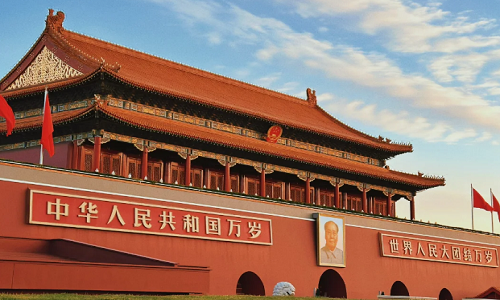

Crossing the Tiananmen Rostrum threshold into the Forbidden City, the guide leads you through the Meridian Gate, pausing to contextualize its historic weight—once dubbed the “Gate of Evil” for imperial executions of treasonous officials, now a gateway to 500 years of dynastic history. As you traverse the flagstone courtyards, the guide decodes the architectural symbolism: golden yellow roof tiles reserved exclusively for emperors (a color mirroring the sun, their celestial counterpart), red walls signifying prosperity and protection, and marble dragon carvings that marked imperial authority. At the Hall of Supreme Harmony, the complex’s grandest hall, the guide steps aside to let the 20-meter ceiling—adorned with a gilded “Dragon of Heaven” swirling in clouds—sink in, then fills in the details: the nanmu wood throne atop a 2-meter marble platform, designed to dwarf visitors and emphasize imperial power; the hall’s role in coronations and Lunar New Year ceremonies; and the little-known quirk that Qing emperors avoided sleeping here, preferring smaller chambers to evade assassination risks. Moving to the Palace of Heavenly Purity, the guide points out a hidden door behind the throne, once used by eunuchs to deliver night messages, and notes the emperor’s habit of rotating bedrooms to outwit threats. The Hall of Union becomes a lesson in imperial protocol as the guide highlights the 25 jade “Imperial Seals of the Qing Dynasty,” each carved for specific duties—treaty-signing, edict-issuing, pardon-granting. Even the courtyard bricks get attention: 15 layers alternating with lime, a defense against tunneling rebels that held for five centuries. Wandering the western palaces, the guide points out traces of domestic life—a marble dressing table worn smooth by empresses’ jewelry, a small kitchen where imperial pastries were crafted—adding depth to the grandeur.


For lunch, the guide navigates to a family-run restaurant, a spot favored by locals and hidden from tourist crowds. He flags the signature Peking duck, prepared by a chef with 40 years of experience who carves the air-dried, wood-roasted bird tableside, ensuring each slice balances crispy skin and tender meat. He also recommends the jingshan meatballs—pork blended with water chestnuts for crunch, braised in a three-generation-old soy-sesame sauce—serving as a bridge between imperial cuisine and home-style comfort.
After lunch, the guide drives to the Summer Palace, his route chosen to reveal Kunming Lake’s shimmering expanse as you arrive. He leads you to the Seventeen-Arch Bridge, noting its 544 stone lions—no two with identical expressions—and the local legend that counting them brings luck. He arranges a dragon boat ride on the lake, pointing out the Tower of Buddhist Incense atop Longevity Hill during the crossing, and later leads the climb to its 108-step viewing platform (a number symbolizing enlightenment), where he points out distant Beijing landmarks on the clear afternoon.Walking the 728-meter Long Corridor, the guide pauses at a restored painting of Journey to the West, sharing how a quick-thinking gardener hid it under white paint during the Cultural Revolution to save it from destruction. At the Marble Boat, he contextualizes its irony: Empress Dowager Cixi, who diverted naval funds to rebuild the palace, named it the “Immortal’s Boat” to symbolize Qing eternity, yet the dynasty fell a decade after her death.
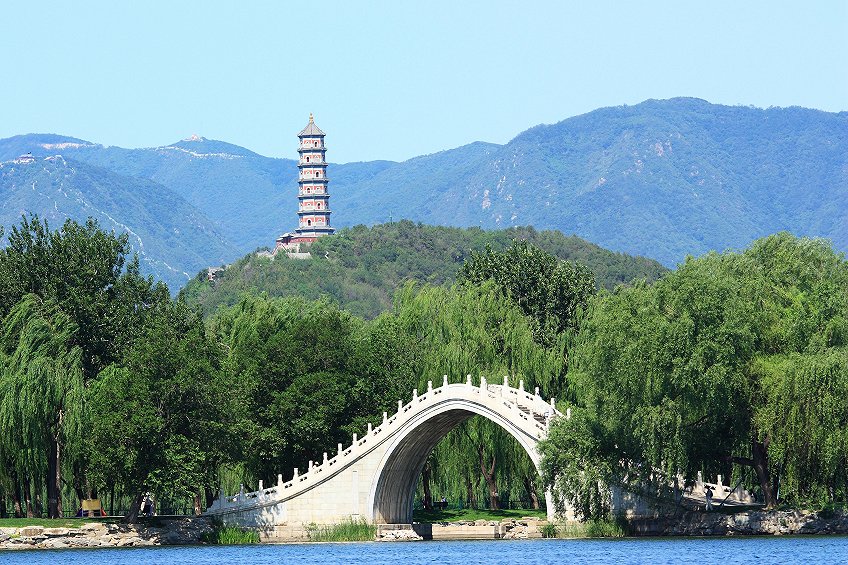

As the day’s exploration draws to a close, you can choose to have dinner in one of two ways: the guide can recommend nearby restaurants that serve authentic Beijing flavors, from classic dishes to local snacks, to help you continue your culinary journey; or you can explore the area around your hotel independently, discovering hidden local eateries at your own pace. After dinner, your dedicated driver will pick you up and safely transfer you back to your hotel, allowing you to relax and reflect on the day’s immersion in Beijing’s imperial history and traditional culture, ready for the next day’s adventures.
After breakfast, your tour guide will greet you in the lobby and take you to your vehicle to Mutianyu Great Wall. During the drive through the outskirts of Beijing, our guide used the time to explain the significance of the Great Wall. He explained that the Great Wall isn't a single, continuous structure, but rather a network of fortifications stretching over 20,000 kilometers, built and renovated over two thousand years. He noted that the Mutianyu section is the best-preserved section, thanks to extensive renovations during the Ming Dynasty that added 22 watchtowers. He also shared how this section of the wall once served as a crucial defensive position against nomadic tribes from the north. Its location atop a forested mountaintop gave soldiers an unobstructed view of incoming enemy forces.Upon arrival, our guide explained two ways to ascend the wall: a cable car ride through the pine-covered slopes, offering a bird's-eye view of the "Dragon's Back" section of the wall winding between the peaks; or a 45-minute hike up stone steps smoothed by centuries of footsteps. He will accompany you along your chosen route, stopping frequently to explain architectural details. At the Jiangjun Tower, the largest of the watchtowers, he highlighted its two-story design, which once housed over a hundred soldiers and housed warehouses for food, crossbows, gunpowder, and other weapons. Reaching the highest point, Wangjing Tower, at 1,058 meters above sea level, he pointed to the distant horizon: On a clear day, he explained, you can see the urban sprawl of Beijing 70 kilometers away, a stark contrast between the past and the present.
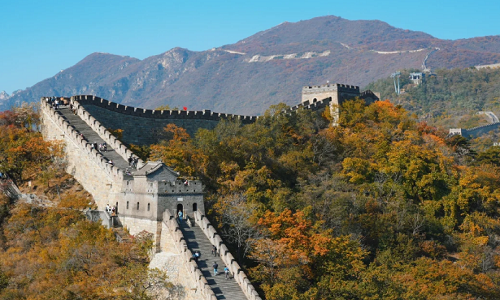

For lunch, your guide will take you to a specialty restaurant that uses fresh, local farm produce. He recommends yong tofu: soft, silky tofu hollowed out, stuffed with ground pork, shiitake mushrooms, and ginger, deep-fried until golden, then simmered in soy sauce, sesame oil, and chicken broth—a dish that embodies the simple yet delicious cooking of rural Beijing. He also recommends mountain vegetable pancakes, crispy wheat dough filled with wild chrysanthemum leaves and chopped green onions, served with spicy fermented bean paste to counteract the greasiness.
From Mutianyu, the guide drives 40 minutes to the Sacred Path (Ling Dao), a 7.3-kilometer “avenue of honor” leading to the Ming Dynasty Tombs. He explains that this path was designed to “guide the emperor’s spirit” to his final resting place, its layout and statues rooted in Confucian ideals of respect and hierarchy. As you walk the tree-lined path, he groups the 36 stone statues (18 pairs) by their roles: the first 12 are “beast guardians,” each symbolizing a virtue—lions for power, elephants for wisdom, camels for endurance, horses for loyalty, qilin (mythical hoofed creatures) for good fortune, and xiezhi (mythical horned beasts) for justice. Each beast stands in two poses—one standing, one kneeling—representing their readiness to serve the emperor day and night. The next 6 pairs are “official guardians”: civil officials in long robes, holding tablets inscribed with imperial titles, and military officials in armor, swords at their hips. The guide points out the meticulous craftsmanship: the lions’ manes carved with individual strands, the elephants’ tusks curved naturally, and the officials’ faces bearing distinct expressions—some stern, some serene. He notes a local tradition: touching an elephant’s trunk is said to grant wisdom, while rubbing a qilin’s horn brings fertility. He encourages you to partake, turning the historical walk into an interactive experience.
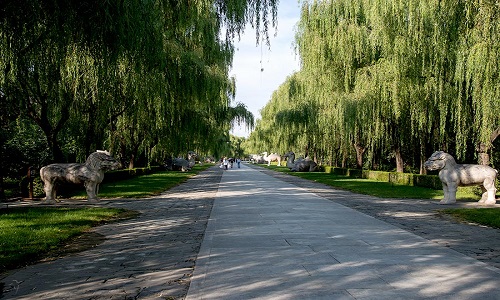

The path ends at the Ding Mausoleum, the tomb of Emperor Wanli and his two empresses—one of only two Ming imperial tombs ever excavated. The guide leads you down into the underground palace, a vast complex carved entirely from white marble with no supporting pillars, and explains that the 1956 excavation was a landmark moment, though not without tragedy. He describes how archaeologists uncovered 3,000+ artifacts, including a “dragon robe” woven with 12 dragons and 12 phoenixes, its silk so fine it could fit in a matchbox. Sadly, the robe disintegrated within hours of exposure to air, a loss that led China to ban imperial tomb excavations in 1961 to protect remaining artifacts.He points out replicas of the most significant finds: gold bowls used for imperial hand-washing, jade bracelets embedded with pearls, and silk tapestries embroidered with scenes of celestial beings. He shares insights into Emperor Wanli’s reign—at 48 years, the longest of any Ming emperor—and his notorious reclusiveness: he refused to leave the Forbidden City for 30 years, ruling from his chambers. Historians, the guide notes, believe Wanli suffered from severe gout, a theory supported by his exhumed skeleton, which shows signs of joint damage. Standing in the cool, quiet Coffin Chamber, with its three massive sarcophagi, the guide’s context turns the stone walls into a window into the emperor’s life and legacy.
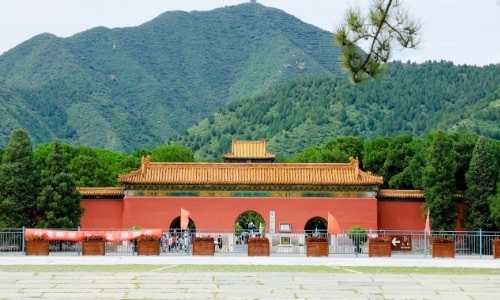
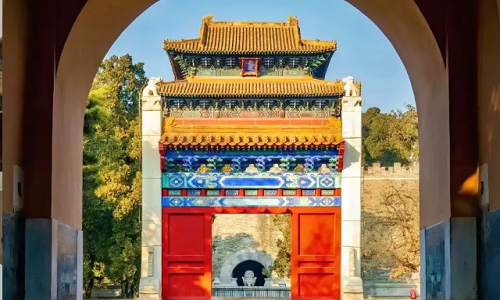
The final stop of the day is the Beijing Olympic Village, a stark contrast to the ancient sites and a showcase of modern China’s architectural ambition. The guide leads you to a viewpoint that frames both the Bird’s Nest (National Stadium) and the Water Cube (National Aquatics Center), two icons of the 2008 Beijing Olympics. He explains the Bird’s Nest’s design by Swiss architects Herzog & de Meuron: its 24 kilometers of interwoven steel beams form a lattice-like structure that looks organic, almost alive, and was once deemed “structurally impossible” by engineers. He notes that it seats 80,000 people and hosted the opening and closing ceremonies, including the iconic moment when Li Ning floated to light the Olympic cauldron. Next to it, the Water Cube’s exterior is covered in 100,000+ ETFE bubbles—a plastic material that’s lighter than glass but stronger than steel. The guide points out how the bubbles shimmer in the sun like a giant blue gem, and at night light up in a rainbow of colors. He shares that inside, the pool where Michael Phelps won 8 gold medals (a single-Games record) remains, its water kept at a constant 27°C. He captures photos of you with both landmarks, noting how they represent Beijing’s duality: a city deeply rooted in history, yet unafraid to embrace the future.

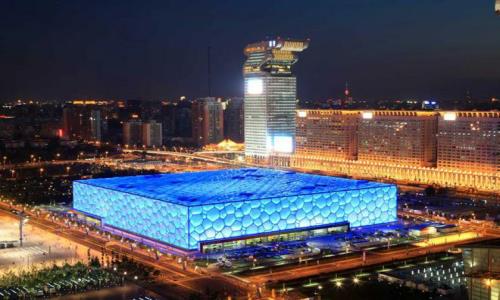
For dinner, the guide recommends a nearby dining area with diverse options: a spot specializing in innovative takes on Beijing classics, where dishes like Peking duck with truffle sauce blend tradition and modernity, or a Sichuan restaurant serving fiery mapo tofu and kung pao chicken for those craving bold flavors. He helps you navigate the area, sharing his favorite picks, before ensuring a smooth return to the hotel.
Travel Tip: Tomorrow's itinerary includes visiting the Temple of Heaven, Beijing's Hutongs, and taking the high-speed rail to Xi'an. The Hutongs have bumpy, cobblestone streets, so be sure to wear sturdy, comfortable shoes.
After breakfast, your guide will greet you with a small notebook filled with interesting little-known anecdotes about the Temple of Heaven, then take you to your bus and introduce you to the morning scene: This UNESCO World Heritage Site was once the exclusive domain of emperors, who came here to worship the gods and pray for a good harvest - a ritual so sacred that it required the emperor to fast for three days, abstain from meat and vegetables, and even walk barefoot.
Upon arriving at the Temple of Heaven, the guide leads you through the main entrance, pausing to highlight the site’s overarching design principle: “heaven is round, earth is square,” a core belief in ancient Chinese cosmology. This duality is visible in every structure: circular halls sit atop square platforms, and blue roof tiles (symbolizing the sky) cover every building— a stark contrast to the imperial yellow of the Forbidden City. He first takes you to the Hall of Prayer for Good Harvests, the complex’s most iconic building. Standing 38 meters tall with three tiers of golden roofs, it’s supported by 28 massive wooden pillars, crafted using mortise-and-tenon joints (no nails)—a 2,000-year-old building technique that has kept the structure standing through earthquakes and centuries. The guide points out the pillar groupings: 4 central “Dragon Pillars” representing the four seasons, 12 “Flower Pillars” for the 12 months, and 12 outer “Guard Pillars” for the 12 hours of the day. He directs you to stand beneath the ceiling’s central dragon motif, where the acoustic design works its magic—even a soft whisper echoes, as if heaven is responding to the speaker. This effect, he explains, once reinforced the emperor’s role as “son of heaven,” making his prayers feel heard by the divine. Next, the guide leads you to the Imperial Vault of Heaven, a smaller circular building that houses the “Tablet of Shangdi,” a sacred wooden plaque inscribed with the deity’s name. Surrounding it is the Echo Wall, a 36-meter-diameter circular wall famous for its acoustic properties. The guide demonstrates by standing at one end and speaking softly—you can hear every word clearly 30 meters away, a feat achieved by the wall’s smooth, curved design. He shares that this “ancient sound system” once amazed imperial visitors, who saw it as further proof of the site’s divine connection.
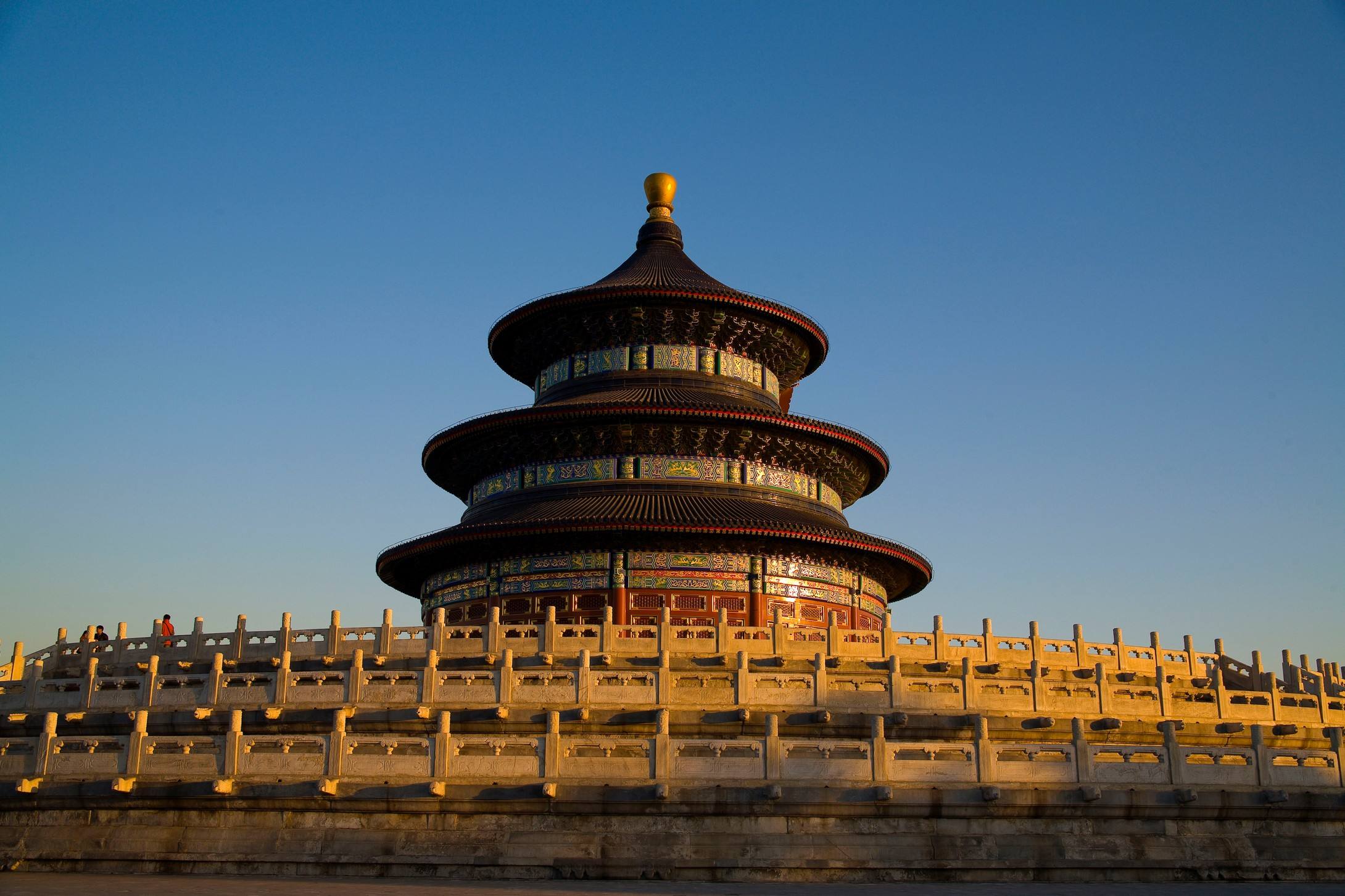
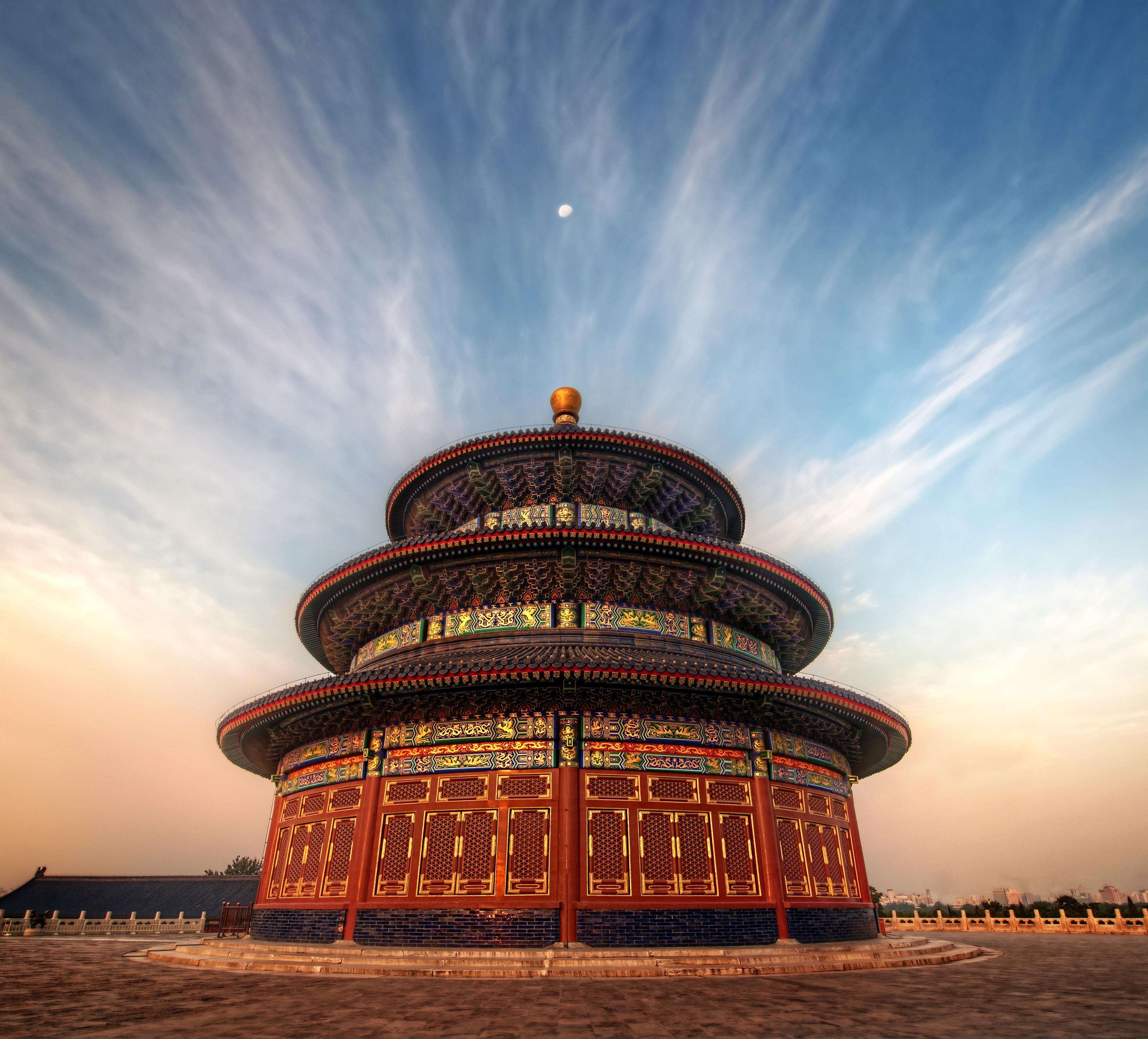
For lunch, the guide navigates to a tiny, unassuming eatery near the Temple of Heaven’s south gate— a spot favored by locals, its walls lined with handwritten notes from regulars. He recommends two iconic Beijing dishes: douzhi, a fermented mung bean soup with a tangy, savory, slightly bitter flavor (an acquired taste, but a staple of working-class Beijing for centuries), served with jiaoquan (twisted fried dough) that you crumble into the soup. For those seeking something heartier, he suggests luzhu huoshao, a rich stew of pork intestines, liver, and lungs simmered in a broth of soy, star anise, and cinnamon, served with huoshao (crispy baked buns) that soak up the flavorful liquid. As you eat, he explains that douzhi was once sold by street vendors who called out in distinctive tones to draw customers— a sound that once filled Beijing’s alleyways.
The guide then leads you to the Hutongs— the narrow, labyrinthine alleyways that are the soul of old Beijing. He navigates the winding lanes with ease, pointing out how the hutongs are organized in a grid pattern, dating back to the Yuan Dynasty (1271–1368). He explains that hutongs are more than just streets; they’re communities, where families have lived for generations, sharing courtyards (siheyuan), water wells, and even celebrations. He arranges a rickshaw ride, pairing you with a driver who’s grown up in the hutongs and knows every hidden corner. As you glide along the cobblestones, the guide walks alongside, pointing out details you might miss: red wooden gates carved with lucky symbols (like peonies for prosperity or bats for good fortune), potted jasmine plants spilling over courtyard walls, and laundry flapping gently in the breeze. You pass elders sitting on stone stools outside their homes, playing chess and chatting in thick Beijing dialect, and children chasing each other through the lanes, their laughter echoing.

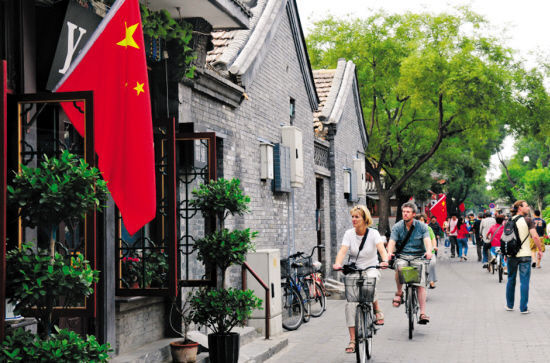
After the rickshaw ride, the guide escorts you into a local family’s siheyuan— a traditional courtyard house he’s arranged to visit in advance. The family greets you warmly, inviting you into their central courtyard, where a grapevine climbs a wooden trellis. They serve candied hawthorns (tangy and sweet, a classic Beijing snack) and sunflower seeds, and the guide helps bridge the language gap, sharing the family’s stories. He explains the layout of the siheyuan: the main house faces south (for maximum sunlight), flanked by smaller wing houses for children or guests, and the courtyard serves as the heart of daily life— where meals are prepared, clothes are dried, and festivals are celebrated. The family shows you their collection of paper cuts— intricate designs of dragons, flowers, and zodiac animals— a traditional craft passed down through generations. The guide encourages you to try your hand at making a simple paper cut, with the family’s matriarch offering gentle guidance. As you work, the guide shares how hutong life is changing: many old courtyards are being renovated, and young people are moving to modern apartments, but some families stay to preserve their heritage. This visit isn’t just about seeing a siheyuan— it’s about feeling the warmth of hutong community, where neighbors know each other’s names and look out for one another.
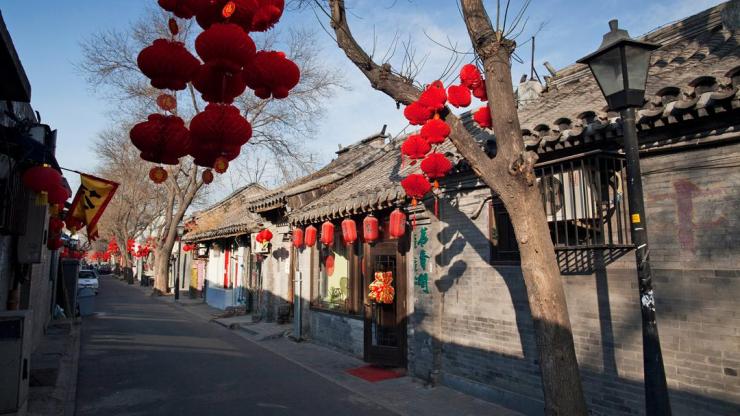

Post-hutongs, the guide manages your transfer to the railway station, handling all check-in procedures for the high-speed rail to Xi’an. Upon arrival in Xi’an, the guide connects with the local Xi’an guide, briefing them on your preferences and the day’s experiences to ensure continuity. He accompanies you to the hotel, helping you check in, and recommends a nearby spot for dinner— specializing in roujiamo and biangbiang noodles (wide, chewy noodles tossed in a spicy sauce with garlic and chili oil). He marks the restaurant on your map and answers any questions about Xi’an before departing, leaving you with a preview of tomorrow’s Terracotta Army adventure.
Travel Tips: Tomorrow’s itinerary centers on the Terracotta Army and Xi’an’s Tang Dynasty landmarks. The guide will meet you at the hotel lobby, and you’ll spend much of the day walking, so keep your comfy shoes on. Xi’an’s climate is drier than Beijing, so the guide will bring extra water bottles— be sure to sip regularly. The Terracotta Army site is large, so the guide will provide a detailed map and highlight the must-see sections, including the unexcavated pits that hold thousands more warriors still buried underground.
After breakfast, The guide meets you with a folder of Terracotta Warriors photos and historical records, leading you to the vehicle and setting the scene for the day’s most iconic site— a discovery so extraordinary it’s been called “the eighth wonder of the world.”
Upon arriving at the site, the guide leads you to the first exhibition hall, where the scale of the discovery hits immediately: 11 corridors filled with rows of life-sized terracotta soldiers, standing shoulder to shoulder as if ready to march. He points to the far corner, sharing the serendipitous origin of the find: in 1974, local farmers digging a well stumbled upon a clay head, and what began as a search for water uncovered one of the greatest archaeological treasures of all time. He walks you along the rows, highlighting the staggering diversity of the warriors. “No two faces are the same,” he says, gesturing to a soldier with a broad jaw and another with a narrow nose. “Archaeologists believe each was modeled after a real soldier in Qin Shi Huang’s army— craftsmen added unique features like wrinkles, scars, and hairstyles to make them individual.” He points out the different ranks: generals with elaborate armor and stern expressions, archers with bow-shaped shoulders (developed from years of practice), and foot soldiers with simple uniforms and determined gazes. Even the horses are distinct— their manes braided in different styles, their muscles taut as if mid-gallop. The guide directs your attention to the fragments scattered between the standing warriors. Most warriors were broken when the tomb was looted shortly after Qin Shi Huang’s death. It takes a team of archaeologists 6–8 months to restore just one soldier— they match fragments like a 3D puzzle, using the original clay mortar to hold them together.
Next, he leads you to Pit 2, which houses cavalry and chariots, and Pit 3— the smallest but most important, as it’s believed to be the command center. Here, the warriors are arranged in a semicircle, and the guide notes the presence of bronze ritual vessels, suggesting this was a place of ceremony rather than battle. He saves the most striking detail for last, The entire army was painted in bright colors— red, blue, green, purple— but the paint flaked off within minutes of exposure to air. Only a few fragments retain their original hue, which is why archaeologists have stopped excavating Pits 4 and 5— they’re waiting for technology to preserve the color.
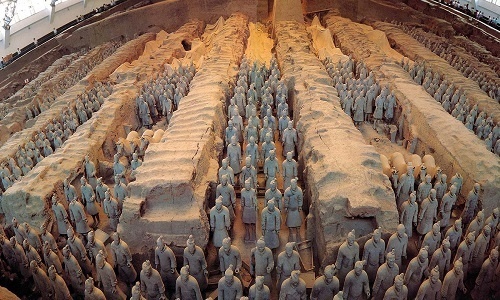
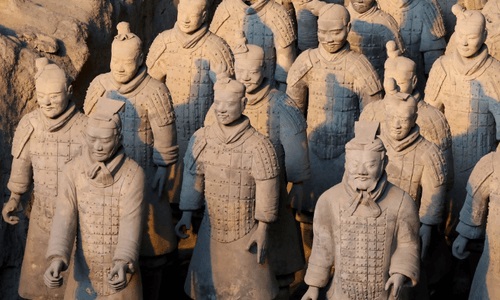
For lunch, the guide takes you to a restaurant near the site that specializes in Shaanxi cuisine, a perfect complement to the morning’s historical deep dive. He recommends yangrou paomo— Xi’an’s signature dish: you tear pieces of flatbread into a bowl, and the chef pours hot, flavorful lamb broth over it, topping it with cilantro, chili oil, and pickled garlic. Farmers would carry flatbread into the fields, then simmer it in broth at night— hearty and filling.
After lunch, the guide drives to the Great Wild Goose Pagoda (Dayan Pagoda), a 64-meter-tall brick pagoda that’s been a Xi’an landmark for over 1,300 years. He explains its origin: in the 7th century, the monk Xuanzang embarked on a 17-year journey to India to retrieve Buddhist scriptures, facing deserts, bandits, and snow-capped mountains. Upon his return to Xi’an (then the Tang Dynasty capital of Chang’an), Emperor Taizong ordered the pagoda built to house the 657 Sanskrit texts and 150 relics he brought back. The guide leads you up the pagoda’s narrow stone stairs (each floor smaller than the one below), pausing at each level to point out the views: to the south, the sprawling Xian University campus; to the north, the bustling city center; and to the east, the distant Qinling Mountains. At the top, he shares a story about Xuanzang: “He spent 19 years translating those scriptures in a temple nearby— working from dawn to dusk, even when his eyesight failed. His translations are still used by Buddhist scholars today.” He points out the pagoda’s architectural details: the square base (a Tang Dynasty preference), the tiered eaves, and the small windows that let in light— all designed for both beauty and stability.
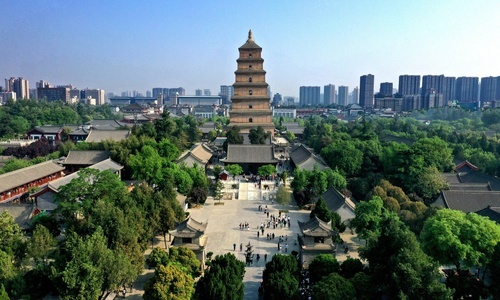
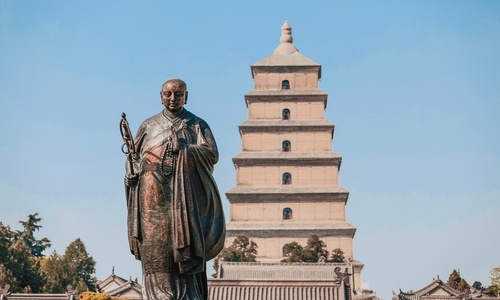
Adjacent to the pagoda is Da Ci'en Temple, the Buddhist temple founded to support Xuanzang’s translation work. The guide leads you through the temple’s courtyards, explaining the layout: the Hall of Heavenly Kings (housing four guardian deities), the Hall of Mahavira (with a 10-meter-tall Buddha statue), and the Hall of Xuanzang (displaying a statue of the monk and copies of his translated scriptures). He pauses at a stone stele in the courtyard, inscribed with the “Preface to the Sacred Teachings of the Great Tang”— written by Emperor Taizong himself in honor of Xuanzang. This stele is one of the most important Tang Dynasty artifacts, It links the emperor, religion, and culture— three pillars of Tang society.
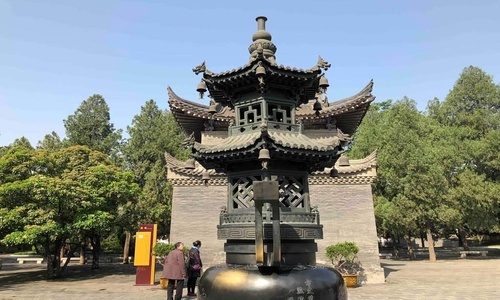
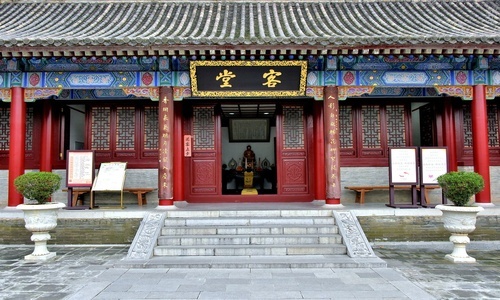
As evening falls, the guide takes you to Datang Never Sleepless City, a pedestrian street that recreates the glory of Chang’an, the world’s largest city during the Tang Dynasty (with a population of 1 million, while London had just 50,000). The street is lined with Tang-style buildings— curved eaves, red pillars, golden decorations— and lit with thousands of lanterns that cast a warm glow. The guide leads you past street performers in Tang costumes: dancers swirling silk scarves, musicians playing ancient instruments like the pipa (a four-stringed lute), and storytellers recounting tales of Tang emperors and poets. The evening's highlight was the fountain show in front of the Great Wild Goose Pagoda. As the sun set, jets of water shot up to a hundred meters into the air, synchronizing with Tang Dynasty music and colorful lanterns. The show recounted Xuanzang's journey—from his departure from Chang'an to his return with Buddhist scriptures. More than just a fountain show, it was a celebration of Tang Dynasty culture—a time when China was open, prosperous, and at the center of the world.

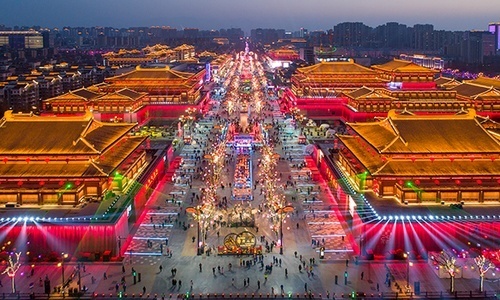
For dinner, the guide recommends a restaurant on the street specializing in Tang-style cuisine, which blends Chinese flavors with Central Asian influences (a nod to Chang’an’s role as a Silk Road hub). Dishes like spiced lamb kebab (inspired by Persian cuisine) and date cake (using ingredients brought via the Silk Road) offer a taste of the dynasty’s culinary diversity. After dinner, he ensures a smooth return to the hotel, leaving you with a book of Tang poems to deepen your connection to the day’s experiences.
Travel Tips: Tomorrow we’ll explore Xi’an’s more intimate historical sites, including the Small Goose Pagoda and Xi’an Museum. Xi’an’s morning air can be cool, so pack a light jacket. The Ancient City Wall visit tomorrow will include an optional bike ride, so wear clothes you can move comfortably in.
After breakfast at the hotel, your tour guide will greet you in the hotel lobby and then take you to your first stop: Small Goose Pagoda.Built in 709 AD, this brick pagoda stands 43 meters tall and appears more delicate than its larger cousin, the Great Wild Goose Pagoda. Unlike the Great Wild Goose Pagoda's rugged lines, its curved forms and minimalist decoration reflect its Mahayana Buddhist monastic roots. Your guide will explain its remarkable resilience: it has withstood 70 earthquakes, including one in 1487 that split it in two—a fissure that healed naturally years later, a feat considered sacred and miraculous by locals. A nearby pavilion hangs a seven-ton Tang Dynasty iron bell, inscribed with 12,000 characters detailing its casting in 713 AD. Once rung 108 times daily to "purify the 108 human desires," its profound resonance was an essential part of ancient temple life; our guide arranged for a replica to be rung, its toll echoing through the surrounding park.
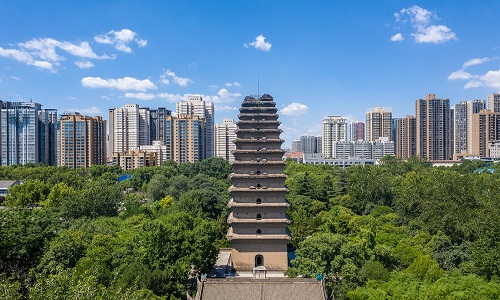
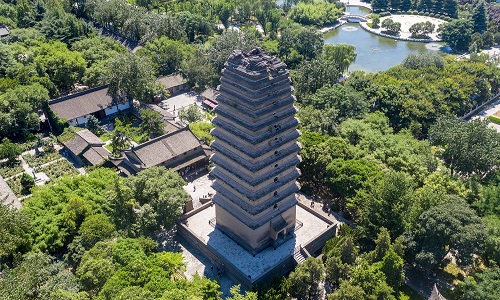
Adjacent to the pagoda lies the Xi’an Museum, a curated collection that the guide positions as a counterpoint to the Terracotta Army’s grandeur— focusing on daily life across millennia. He leads you through chronological exhibits, starting with prehistoric Banpo Neolithic artifacts: painted pottery bowls etched with fish motifs and bone tools. At a Western Zhou Dynasty bronze tripod cauldron, he notes its social significance: tripods were status symbols, with quantities tied to a family’s rank in the feudal hierarchy.The Tang Dynasty gallery emerges as the centerpiece. The guide highlights a porcelain camel figurine laden with silk rolls and spices— a tangible relic of the Silk Road, where Chang’an (modern Xi’an) served as the eastern hub. He points to a gold hairpin inlaid with jade and pearls, once worn by a noblewoman, explaining that Tang women enjoyed unprecedented freedom: they rode horses, played polo, and adorned themselves with elaborate accessories like this. He connects the artifacts to historical texts, painting a portrait of ordinary Tang life— from merchants haggling in markets to artisans crafting pottery.
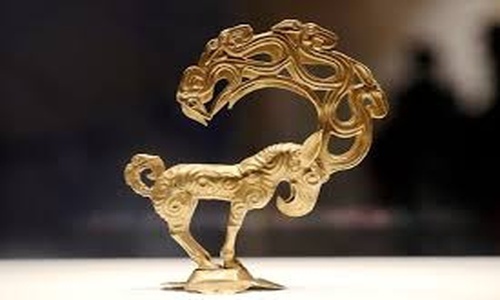
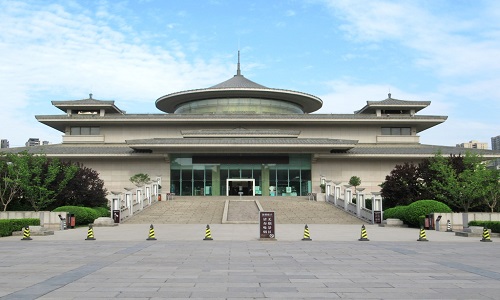
Lunch focuses on Xi’an’s wheat-based specialties, with the guide steering toward dishes distinct from prior meals. Highlights include xianbing— savory pancakes stuffed with minced beef and cilantro, cooked on a griddle until the crust cracks to reveal juicy filling— and douhua, soft silken tofu served in a zesty sauce of chili oil, vinegar, and fermented soybeans. These are street foods with roots in Tang commoner cuisine, unchanged in essence for centuries.
The afternoon brings a visit to the Ancient City Wall, China’s best-preserved imperial defensive structure. Built during the Ming Dynasty atop Tang-era foundations, it stretches 13.7 kilometers, standing 12 meters high and 15 meters wide— ample space for eight horses to gallop abreast. The guide details its defensive engineering: 98 watchtowers positioned every 120 meters for unbroken surveillance, a 5-meter-deep moat, and crenellated parapets with arrow slits. He offers two ways to explore: a leisurely 2-kilometer walk, where you can pause to admire views of traditional courtyard houses inside the wall and modern skyscrapers beyond; or a bike ride that covers more ground, with rest stops at ornate gates like the South Gate, whose wooden tower still bears traces of Ming-era paint.
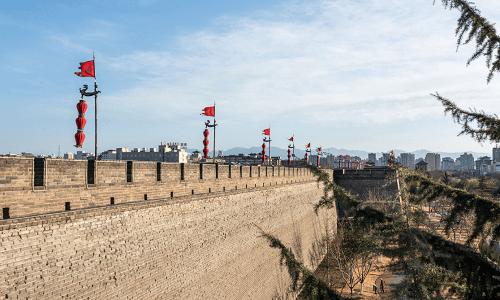

As the afternoon turns to evening, the guide leads you to Muslim Street (Huimin Street), a bustling pedestrian street lined with food stalls, souvenir shops, and mosques. Xi’an has a large Muslim population (descendants of Silk Road traders from Central Asia and the Middle East), and the street reflects this cultural blend. The guide navigates the crowds with ease, pointing out the most authentic spots. He recommends trying liangpi (cold rice noodles tossed with chili oil, vinegar, and garlic), rougamo (similar to roujiamo but with spiced lamb), and dousha bao (sweet red bean paste buns). For dessert, he suggests yanggao (steamed rice cake with osmanthus honey) and shuijiao (dumplings filled with lamb and green onions). Your guide also takes you to the Great Mosque of Xi’an, located at the end of the street. Built in 742 CE (Tang Dynasty) but renovated in the Ming Dynasty, it blends Chinese architectural style (curved eaves, red pillars) with Islamic features (a minaret shaped like a pagoda, no figurative decorations).This fusion is a testament to Xi’an’s history as a multicultural city: Silk Road traders brought their religion with them, and it merged with Chinese culture to create something unique.

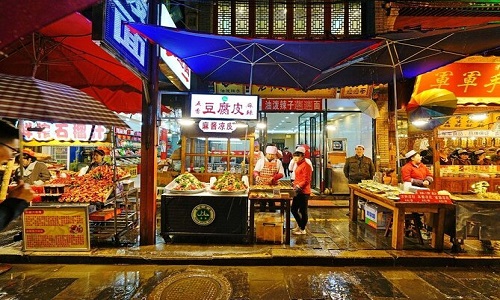
For dinner, the guide recommends a family-run Muslim restaurant on a side street off the main thoroughfare— less crowded than the street stalls, with more elaborate dishes. Try the spiced whole lamb leg (slow-cooked until tender) and fried rice with lamb and raisins (a Central Asian influence). After dinner, he walks you back to the hotel, pointing out the city wall lit up at night— a golden ribbon surrounding the old town.
Travel Tip: Tomorrow we'll fly to Lhasa, and your guide will meet you at your hotel and transfer you to the airport. Bring your altitude sickness medication. Your guide will explain how to adapt to altitude sickness: drink plenty of water, avoid strenuous exercise for 24 hours, and avoid alcohol. Most importantly, collect your documents and luggage.
After breakfast, the guide handles airport logistics, ensuring a smooth check-in for the flight to Lhasa. As the plane climbs, the landscape transforms—from Shaanxi’s fertile plains to Qinghai’s rugged mountains, then to the snow-capped Himalayas, their peaks glinting in the sun. On clear days, Mount Everest’s distant silhouette emerges, a faint white peak on the horizon.
Upon landing at Lhasa Gonggar Airport (3,650 meters), the guide emphasizing altitude acclimatization: slow movements, frequent sips of water, and no strenuous activity for the first 24 hours. The drive to downtown Lhasa unfolds with Tibetan vistas: prayer flags (blue for sky, white for air, red for fire, green for water, yellow for earth) fluttering from rooftops, monks in maroon robes walking to monasteries, and stupas—white, dome-shaped Buddhist monuments—dotting the hills. After checking in, you rest to let your body adjust, with the guide checking in periodically to monitor for altitude sickness symptoms (headache, nausea). In the late afternoon, a gentle walk to the nearby Jokhang Temple Square introduces Lhasa’s rhythm: pilgrims prostrating on the flagstones, their hands and knees padded with leather; vendors selling butter tea and tsampa (roasted barley flour); and the golden roof of Jokhang Temple glinting in the late sun.
For dinner, you can explore the local cuisine. Your guide reminds you to avoid alcohol and overeating, and to carry a bottle of water with you overnight.
Start the day with a traditional Tibetan breakfast.Today’s journey begins with a visit to the Potala Palace, Lhasa’s most famous landmark. Perched on Red Mountain, the Potala Palace is a magnificent symbol of Tibetan Buddhism and Tibetan history. Once the winter residence of the Dalai Lama, the palace is a marvel of Tibetan architecture, boasting a complex of over 1,000 rooms, chapels, and halls. Built in the 7th century by King Songtsen Gampo, the Potala Palace was expanded and renovated by the 5th Dalai Lama in the 17th century. The palace is not only an architectural feat but also a spiritual center. Inside, you’ll find lavish murals, sacred relics, and the tombs of past Dalai Lamas, all of which your guide will explain in detail. You’ll learn about the history of Tibet’s rulers and religious figures and how the Potala Palace became a center of both political power and religious devotion. Your guide will take you through the rooms, explaining the significance of each area, such as the Buddhist chapels adorned with centuries-old frescoes and statues of Buddha. The sacred air of the place, combined with the stunning views of Lhasa, makes this experience both deeply moving and awe-inspiring.
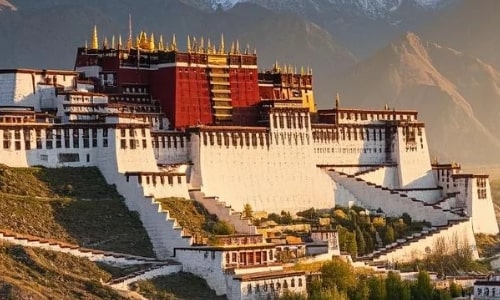
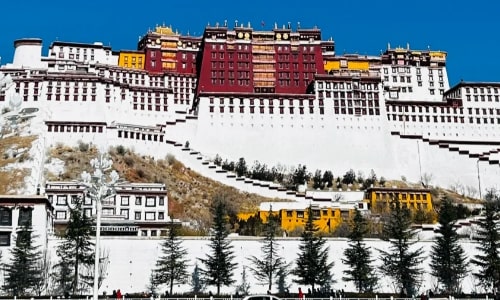
Enjoy a typical Tibetan meal of momos (steamed dumplings) and thukpa (noodle soup), which offer a taste of the local culture. These dishes are comfort foods for Tibetans and perfect after a morning of exploration.
After lunch, you’ll head to the Jokhang Temple, one of the holiest and most revered temples in Tibet. Founded in the 7th century by King Songtsen Gampo, Jokhang Temple is the spiritual heart of Tibet. Pilgrims from all over Tibet and the world come to worship here, walking around the temple in a clockwise direction. The temple houses the famous Jokhang Buddha, a golden statue of the young Buddha Shakyamuni that is believed to have been brought to Tibet by Princess Wencheng of the Tang Dynasty. As you enter the temple, your guide will lead you through the main prayer halls, where monks chant mantras, and devotees light butter lamps in reverence. Your guide will share the fascinating history of the temple, including its role in shaping Tibetan Buddhism and its cultural influence on Tibetan society. You will also learn about the sacred rituals that take place here daily and how the temple’s influence extends beyond religious boundaries, impacting Tibetan art, culture, and society.


Lhasa’s most famous landmark. Perched on Red Mountain, the Potala Palace is a magnificent symbol of Tibetan Buddhism and Tibetan history. Once the winter residence of the Dalai Lama, the palace is a marvel of Tibetan architecture, boasting a complex of over 1,000 rooms, chapels, and halls. Built in the 7th century by King Songtsen Gampo, the Potala Palace was expanded and renovated by the 5th Dalai Lama in the 17th century. The palace is not only an architectural feat but also a spiritual center. Inside, you’ll find lavish murals, sacred relics, and the tombs of past Dalai Lamas, all of which your guide will explain in detail. You’ll learn about the history of Tibet’s rulers and religious figures and how the Potala Palace became a center of both political power and religious devotion. Your guide will take you through the rooms, explaining the significance of each area, such as the Buddhist chapels adorned with centuries-old frescoes and statues of Buddha. The sacred air of the place, combined with the stunning views of Lhasa, makes this experience both deeply moving and awe-inspiring.
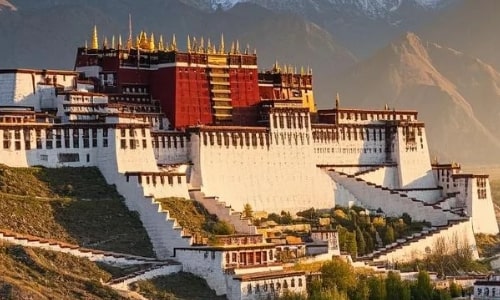
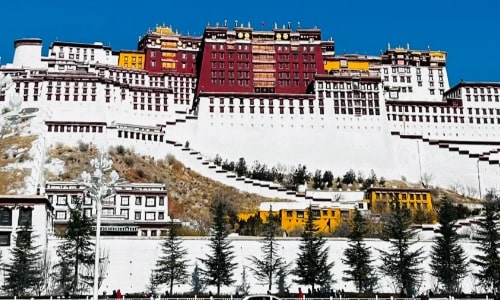
In the evening, explore the Barkhor Street area, which surrounds the Jokhang Temple. This vibrant market is filled with vendors selling Tibetan handicrafts, religious artifacts, and souvenirs. Your guide will walk with you through the bustling street, explaining the significance of the items for sale and the importance of pilgrimage in Tibetan life. If you’re interested, your guide can point out local food stalls where you can try traditional snacks like yak butter tea and dried yak meat.Afterward, your guide will suggest nearby restaurants where you can sample other Tibetan delicacies, or if you prefer, you can explore more of the city and enjoy a relaxing dinner at your own pace.
Begin your day with a warm cup of yak butter tea, a staple in Tibetan culture, paired with momos (steamed dumplings) and freshly baked barley bread. This hearty breakfast is designed to energize you for another full day of cultural exploration.
Your first stop is Norbulingka Park, known as the "Jewel Park" and the summer residence of the Dalai Lama. Norbulingka, which means "Jeweled Park" in Tibetan, was established in the 18th century and is often considered the spiritual counterpart to the Potala Palace. While Potala served as the winter residence of the Dalai Lamas, Norbulingka was where they retreated during the summer months to escape the heat and tend to both administrative and spiritual matters. As you walk through the park’s expansive grounds, your guide will explain how this serene landscape reflects the Tibetan way of life — blending nature with spiritual practice. The park’s main attraction is the Norbulingka Palace, a harmonious fusion of Tibetan and Chinese architectural styles, showcasing the artistic and cultural dialogue between the two regions. The colorful murals and decorations inside depict key moments in Tibetan Buddhist history, offering a glimpse into the Dalai Lama's private world. Your guide will also introduce you to the traditional Tibetan gardens, which have become symbols of peace and reflection in Tibetan culture. The tranquil ponds, verdant lawns, and groves of trees here serve as a backdrop for introspection and prayer, illustrating the Tibetan belief in harmony between the environment and the human soul.
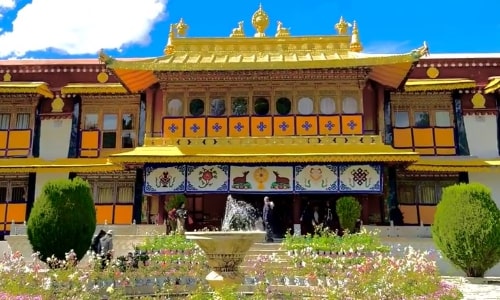
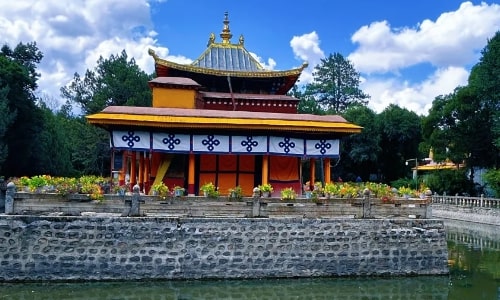
In the afternoon, you'll make your way to Drepung Monastery, one of the largest and most influential monasteries in Tibet. Established in 1416 by Jamyang Chojey, Drepung was once home to over 10,000 monks and served as the religious heart of Tibet until the construction of the Potala Palace. Your guide will help you understand the profound spiritual and intellectual role that Drepung played in Tibetan Buddhism. As the largest Gelugpa monastery in the world, Drepung was a center of theological study, and many Tibetan monks, including some Dalai Lamas, received their training here.The monastery’s architecture is awe-inspiring. The vast whitewashed buildings are nestled against the Nyanang Mountains, with panoramic views of the Lhasa Valley below. Your guide will take you through the various chapels and meditation rooms, where you'll encounter intricate thangkas (traditional Tibetan paintings) and statues of Buddha that tell the stories of Tibetan Buddhist teachings. The Ganden Potrang (the Great Assembly Hall) is a highlight, where spiritual discussions and teachings were once held. It is an exceptional opportunity to witness the artistic and religious evolution of Tibetan culture through its architecture and religious art.
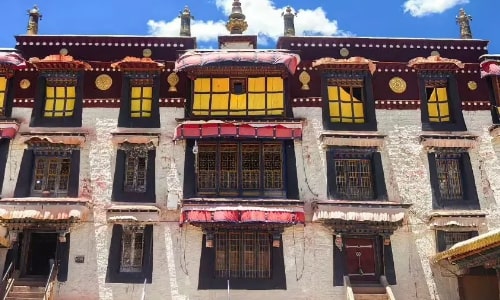

Following Drepung, you’ll head to Sera Monastery, founded in 1419, which remains one of the most important Buddhist monasteries in Tibet today. Sera is particularly famous for its debating monks, who engage in passionate, physical debates over Buddhist doctrines. These debates are a fascinating tradition that has continued for centuries, and your guide will explain their significance in shaping Buddhist philosophy and how these intense discussions help deepen one’s understanding of the texts.As you witness the lively debates, with monks clapping their hands or raising their arms to emphasize their arguments, your guide will describe the intellectual tradition that these debates represent. These debates are not just academic; they are an important part of spiritual training that challenges monks to sharpen their minds and refine their spiritual insights. The Sera debate courtyard is one of the most unique places in Tibet, and it’s where the most in-depth and dynamic discussions occur, making it a must-see.

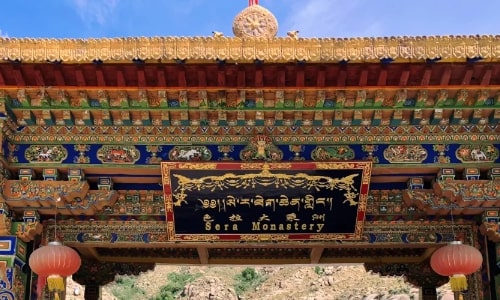
After a day rich in spiritual and cultural exploration, your guide will recommend a visit to the Old Town of Lhasa, where you can wander through narrow streets and enjoy the sights and sounds of the local life. The markets here are bustling with activity, and you’ll find a variety of handmade Tibetan crafts, thangkas, wooden prayer wheels, and traditional jewelry. This is also a great opportunity to interact with the locals, as Lhasa's Old Town is one of the best places to experience everyday Tibetan life.
For dinner, your guide may suggest trying yak steak or tibetan barley bread served with a cup of local Tibetan wine or traditional yak milk tea. Alternatively, if you prefer to explore independently, your guide will provide a list of recommended spots to try these authentic dishes. After dinner, you can take some time to stroll around, savoring the atmosphere of Lhasa in the evening, or visit a local café to reflect on your experiences from the day. This day offers you not only an insight into Tibetan Buddhism’s deep-rooted philosophical and cultural practices but also a chance to appreciate the traditions that have shaped Tibetan identity for centuries. Your guide’s expertise ensures that each location is brought to life with rich historical context and cultural understanding, offering you a comprehensive and immersive experience of Tibetan spirituality and culture.
Your final breakfast in Lhasa will be a peaceful moment of reflection before your departure. Enjoy a bowl of yak milk tea or sweet Tibetan porridge and reminisce on the experiences of the past days.On your last day, you will have a relaxed morning. Depending on your flight time, you may have some free time for last-minute exploring in Lhasa. Your guide will make sure you get to the airport on time, ensuring a smooth and comfortable departure.As you say goodbye to Tibet, the memories of its rich history, stunning landscapes, and spiritual depth will stay with you long after your journey ends. Safe travels!
At Your Way Holiday, we strive to enhance the depth and flexibility of your travel experience by offering a range of optional additions to our core tour itineraries. Our itineraries are designed to provide exceptional flexibility, allowing you to tailor your journey according to your preferences. Select from a variety of activities and experiences to enrich your itinerary, ensuring a personalized adventure that perfectly aligns with your interests. With Your Way Holiday, you have the freedom to create a memorable travel experience that is uniquely yours.
Golden Dynasty Show & Dumpling Feast
Step into the enchanting world of ancient China with the Golden Dynasty Show, a mesmerizing performance inspired by the Sanxingdui Culture — a mysterious and fascinating ancient civilization dating back over 3,000 years. This captivating dance drama blends cultural history, art, and advanced technology to bring the grandeur of the ancient Chinese dynasty to life. The show intricately showcases the rituals, legends, and artistry of the Sanxingdui civilization, featuring elaborate costumes, traditional Chinese instruments, and a compelling storyline that tells of the rise and fall of this once-mighty culture. Through a combination of stunning visuals, innovative choreography, and immersive technology, the Golden Dynasty Show offers a rich and dynamic portrayal of China's early civilization and its impact on the country's cultural development. It’s a spectacular experience that will leave you in awe of the creativity and mystery of this ancient period. After the performance, indulge in a Dumpling Feast, where you'll be treated to a variety of freshly made dumplings, a cherished culinary tradition in Chinese culture. From savory meat and vegetable fillings to sweet dumplings, each bite is a flavorful journey through China’s diverse food heritage. The Dumpling Feast offers a perfect conclusion to your evening, allowing you to savor the authentic tastes of the region in a relaxed and festive setting.
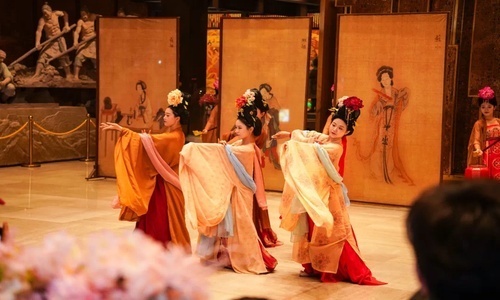
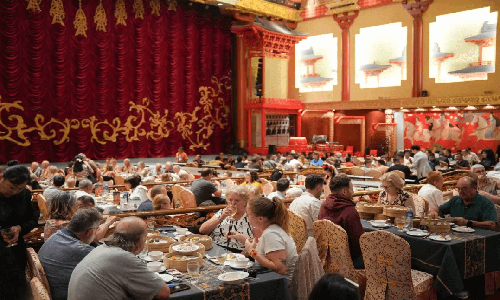
Tai Chi Experience
For a more serene and introspective activity, we offer a Tai Chi experience, where you can learn the ancient practice of Tai Chi in a peaceful, tranquil setting. Tai Chi is not only a physical exercise but also a spiritual practice that encourages mindfulness, balance, and harmony between the body and the mind. Whether you are a beginner or have some experience, your instructor will guide you through the movements with a focus on breathing, posture, and slow, deliberate motions. This is an excellent way to connect with Chinese culture and rejuvenate both body and mind.

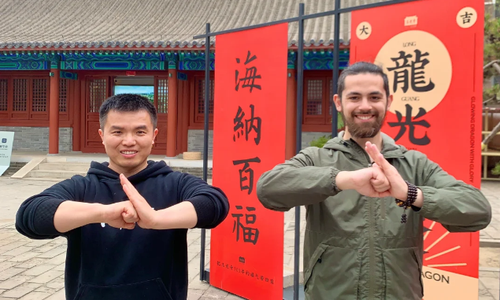
Calligraphy Experience in Xi’an
For those interested in exploring the art of Chinese calligraphy, we offer a unique experience in Xi’an. Calligraphy is one of the oldest and most revered art forms in China, and this hands-on session will introduce you to the intricate techniques of brushwork, ink control, and character formation. With the guidance of an experienced calligrapher, you’ll have the opportunity to create your own masterpiece and take home a personal piece of Chinese culture. Whether you’re a fan of art or simply curious about this fascinating craft, this experience offers a deeper connection to China’s rich cultural heritage.


Price Per Person in US Dollars
Personalized Travel Consultant
Experience the best of China with our expert travel consultants by your side. With years of local tourism experience, they are not only professional and knowledgeable but also deeply committed to making your trip unforgettable. Your dedicated consultant will craft a bespoke tour plan tailored to your unique interests, schedule, and budget, offering you the utmost flexibility. From the moment you start planning until the end of your journey, they will be in touch, ensuring every detail is perfect and that your trip runs smoothly.
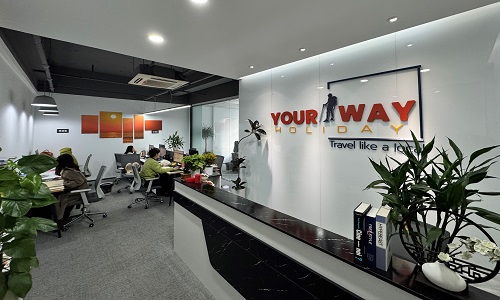

Exceptional Local Guides
Discover it through the eyes of our exceptional local guides. All certified and experienced, they are passionate about sharing their deep knowledge of attractions, history, and culture. Whether you're interested in hidden gems or popular sites, they know the best places to visit. They can recommend top local restaurants, unique shopping spots, and must-see shows. Beyond just guiding, they provide enriching insights into the history, customs, and authentic daily life, making your experience truly immersive.
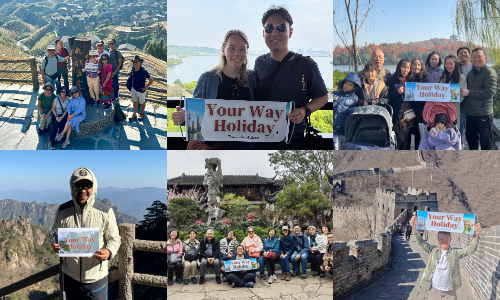

Premium Private Transportation
Travel in comfort and style with our premium private transportation. We offer a fleet of air-conditioned, non-smoking, clean, and meticulously maintained vehicles, all less than four years old. Our professional drivers, all locals with over a decade of driving experience, are friendly, courteous, and dedicated to your safety and comfort. Depending on your group's size, we provide a range of vehicles, including sedans, SUVs, business vans (MPVs), and spacious buses, all with ample luggage space.
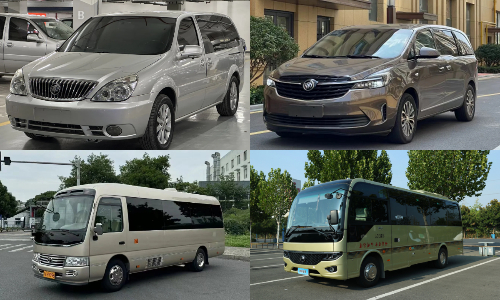
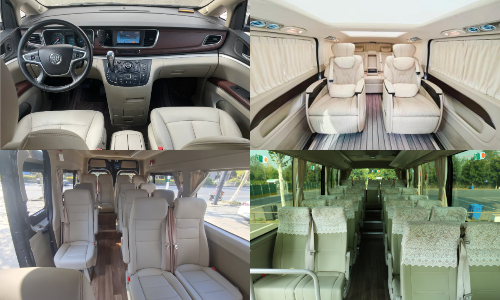
Authentic Dining Experiences
We prioritize genuine local culinary experiences over pre-arranged tourist restaurants. Our local guides will recommend the best local restaurants where you can savor authentic flavors. This approach ensures you enjoy the freshest, most authentic meals, tailored to your preferences, and experience the true essence of the local cuisine. Whether your dietary needs are vegetarian, Muslim, Chinese, Western, Jewish, or Indian, we have excellent options to make every meal a delightful part of your journey.
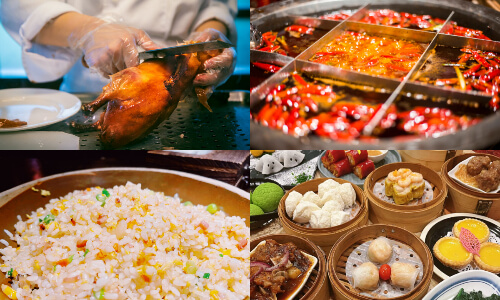
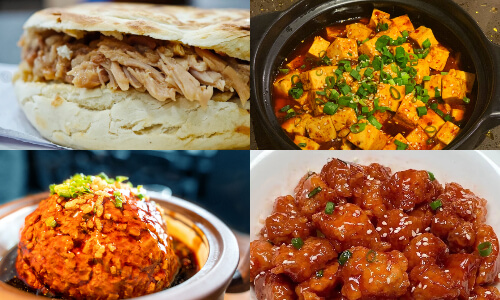
Duration:8 Days, 7 Nights
Attractions(Cities):Shanghai, Xian, Beijing
Tour Style:Ultimate 8-Day Private China Tour: Beijing, Xi'an & Shanghai with High-Speed Train Adventures is the ideal way for first-time visitors to discover the best of China. This private tour seamlessly connects the vibrant metropolis of Shanghai, the ancient wonders of Xi'an, and the cultural riches of Beijing. In Shanghai, marvel at the stunning skyline, explore the historic French Concession, and wander through the peaceful Yu Garden. In Xi'an, witness the world-famous Terracotta Warriors and enjoy a fun family bike ride along the ancient City Wall. Finally, in Beijing, step back in time with visits to the majestic Forbidden City, walk the iconic Great Wall, and explore the tranquil Temple of Heaven. Experience the convenience and comfort of high-speed bullet trains traveling between cities, all while being guided by an expert who brings China’s rich culture, history, and modern marvels to life. This tour offers a perfect blend of adventure and relaxation, making it an unforgettable journey through China’s highlights.
Duration:10 Days, 9 Nights
Attractions(Cities):Beijing, Xian, Guilin, Shanghai
Tour Style:The best China tours for families come to life with this 10-Day Best of China Family Tour, offering a perfect blend of history, culture, and adventure in Beijing, Xi'an, Guilin, and Shanghai. In Beijing, families can marvel at the grandeur of the Forbidden City, stroll through Tiananmen Square, and hike the awe-inspiring Great Wall, creating lasting memories. Next, travel to Xi'an, where you’ll cycle along the ancient City Wall, discover the Terracotta Warriors, and immerse in the vibrant Muslim Quarter. In Guilin, take a scenic Li River cruise, wander through the beautiful countryside, and explore the fascinating Reed Flute Cave. Finally, in Shanghai, blend the old and new with visits to the Yu Garden, the Bund, and enjoy family fun at Shanghai Disneyland. A peaceful boat ride through a charming water town offers the perfect way to unwind. This all-inclusive family tour ensures a seamless experience with accommodations, expert guides, domestic flights, meals, and transport, making it the perfect family adventure through China’s most iconic sights.
Duration:21 Days, 20 Nights
Attractions(Cities):Beijing, Xian, Guilin, Kunming, Dali, Lijiang, Shangri-La, Chongqing, Yangtze River Cruise, Shanghai
Tour Style:Book this 21-day China private tour and experience the best China tours across the country's most iconic destinations, including scenic Yunnan, the majestic Yangtze River, Beijing, Xi'an, Guilin, Kunming, Dali, Lijiang, Shangri-la, Chongqing, Yichang, and Shanghai. Our professional tour guide will lead you through the diverse and rich cultures of southwest China, highlighting the amazing ethnic customs and traditions. Along the way, you'll enjoy some of the best China tours, taking in the breathtaking landscapes like the Li River in Guilin and a relaxing voyage along the Yangtze River. This tour offers a perfect combination of China’s deep historical roots, including the ancient wonders of Beijing and Xi'an, with the stunning natural beauty of Lijiang, Dali, and Shangri-la. From the timeless heritage to the awe-inspiring sceneries, this China private tour is the ultimate way to explore China’s most majestic and culturally significant spots, offering a truly unforgettable experience.
Duration:24 Days, 23 Nights
Attractions(Cities):Shanghai, Suzhou, Huangshan, Hangzhou, Guilin, Lijiang, Chengdu, Xi'an, Beijing
Tour Style:This 24-day private China tour offers an unforgettable journey through China’s most iconic cities and scenic wonders, from the futuristic skyline of Shanghai to the imperial majesty of Beijing. Along the way, you’ll stroll through Suzhou’s elegant classical gardens, hike the misty peaks of Huangshan, sip fragrant Dragon Well tea beside Hangzhou’s tranquil West Lake, cruise past dramatic karst landscapes on the Li River in Guilin, and wander the storybook lanes of Lijiang Old Town. In Chengdu, meet the beloved giant pandas and dive into Sichuan culture, while Xi’an reveals the awe-inspiring Terracotta Warriors and ancient city walls. Designed for comfort and depth, this immersive China holiday package includes knowledgeable private guides, seamless transfers, and handpicked accommodations, ensuring every step of your adventure is smooth, enriching, and unforgettable. Perfect for travelers seeking culture, nature, and authentic local experiences, this curated journey lets you discover the best of China in style and ease.
Duration:6 Days, 5 Nights
Attractions(Cities):Beijing, Xian
Tour Style:If you want to truly experience China, the Beijing Xi'an Tour Packages should be your top priority. This 6-Day Beijing & Xi'an Tour is an ideal option for visitors who want to explore the essence of Chinese culture and history in a short time. With Beijing Xi'an Tour Packages, you'll be accompanied by a knowledgeable guide who will help bring ancient Chinese history to life. Starting in Beijing, the capital of China for centuries, you’ll visit iconic landmarks like the Great Wall, the Forbidden City, and the Temple of Heaven. Then, travel to Xi'an, the ancient capital of China and home to the famous Terracotta Warriors. These two ancient cities offer a fascinating journey through China’s imperial past.The Beijing Xi'an Tour Packages give you a deeper understanding of Chinese history and culture, all while enjoying the convenience and comfort of high-speed train travel between the two cities. Whether you’re interested in ancient history, stunning architecture, or the rich cultural heritage, this tour offers an unforgettable experience.
Wechat: Chinaprivatetour
24 Hours Hotline:
+86 137-3541-1378
(Your Privacy is Protected)
Leave your online Chat ID here. We will get in touch with you within 10 minutes.
1 to 1 tailor-made service from our professional travel advisors for the most sophisticated
Constantly excellent reviews for attraction, hotel and service Competitive price
Local experts provide quality tours Best selected knowledgeable local guides Authentic local restaurants
7*24 hours available to create you a worry-free tour. No Hidden Fees and absolutely no pressure to buy. Secured








Exploring Beijing, Xi'an, and Lhasa in just 10 days was a whirlwind of history, culture, and breathtaking landscapes. Beijing was a perfect start, where iconic landmarks like Tiananmen Square and the Forbidden City blew us away. But what really made Beijing special was the quieter moments, like the Hutong rickshaw ride where we got to interact with locals. Moving on to Xi'an, the Terracotta Warriors were the highlight—truly awe-inspiring! We also got a glimpse of Xi'an’s rich history with the Ancient City Wall and Muslim Street. Finally, Lhasa was the spiritual climax of the trip. The Potala Palace and Jokhang Temple were both awe-inspiring, and the peaceful Tibetan atmosphere gave us the perfect end to this unforgettable journey.
We recently returned from a 10-day tour of Beijing, Xi'an, and Lhasa, and what an adventure it was! Every single day brought something new and exciting. Beijing was our first stop, and it certainly set the bar high. The Forbidden City was just as awe-inspiring as I had imagined, and Mutianyu Great Wall was even more stunning in person. The highlights for us in Beijing, though, were the quieter, less touristy experiences. The Hutong tour and rickshaw ride were incredibly special—getting the chance to meet a local family and learn about their daily life in the heart of Beijing was so enriching. It was such a great way to see a different side of the city.
Xi'an was next, and it was packed with highlights. The Terracotta Warriors were a must-see, and they did not disappoint. Our guide was fantastic at explaining the history of the warriors and their significance to China’s past. We also spent time at the Great Wild Goose Pagoda and wandered the ancient city wall, both of which offered a sense of peace and serenity that contrasted nicely with the bustling markets. Speaking of markets, Muslim Street was an absolute blast—vibrant, full of life, and offering delicious food at every turn.
Finally, we reached Lhasa, and it was the perfect way to end the trip. The energy of the city is hard to describe—it’s a blend of spirituality, history, and natural beauty. The Potala Palace is a marvel, and we loved spending time at Jokhang Temple, where we could just sit and take in the peaceful atmosphere. Lhasa’s unique charm really left an impression on us, and we felt like we’d experienced something truly special. The guides in all three cities were excellent—professional, knowledgeable, and always willing to share extra details that brought the sights to life. If you’re looking for an in-depth, enriching cultural experience, I can’t recommend this trip enough. It was an unforgettable journey!